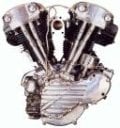Hi,
I just picked up an O2 from the dumpster at work. It's not a massive spec but there were a few others in a bad state so managed to salvage some memory to boost it up to an R5000 300MHz with 256MB RAM. It came with no hard drives, but does have both caddies. I had a brand new, sealed, new old stock 72GB IBM Ultra 320 SCSI disk kicking around from an old system so fitted that into the caddy - and now the machine no longer powers up! Previously I could get to the 'BIOS' screen and go into the Maintenence screen and so forth. Now with the drive in, the power LED just remains orange, no boot up chime, and no display. Presumably the drive is not compatible but reading the FAQ it does say Ultra 320 disks should be ok. Is it the size of the disk that's the problem or should that be OK?
Is there something I'm missing?
Thanks in advance.
I just picked up an O2 from the dumpster at work. It's not a massive spec but there were a few others in a bad state so managed to salvage some memory to boost it up to an R5000 300MHz with 256MB RAM. It came with no hard drives, but does have both caddies. I had a brand new, sealed, new old stock 72GB IBM Ultra 320 SCSI disk kicking around from an old system so fitted that into the caddy - and now the machine no longer powers up! Previously I could get to the 'BIOS' screen and go into the Maintenence screen and so forth. Now with the drive in, the power LED just remains orange, no boot up chime, and no display. Presumably the drive is not compatible but reading the FAQ it does say Ultra 320 disks should be ok. Is it the size of the disk that's the problem or should that be OK?
Is there something I'm missing?

Thanks in advance.
_________________




 The r5's are cooler and quieter than the R10's, they make for a nice O2. Just add more memory. O2's love memory, since they share it with graphics.
The r5's are cooler and quieter than the R10's, they make for a nice O2. Just add more memory. O2's love memory, since they share it with graphics.













 (single-CM)
(single-CM)
